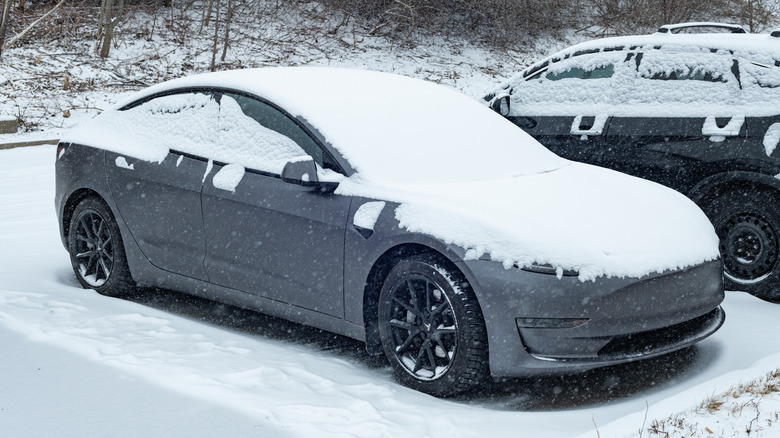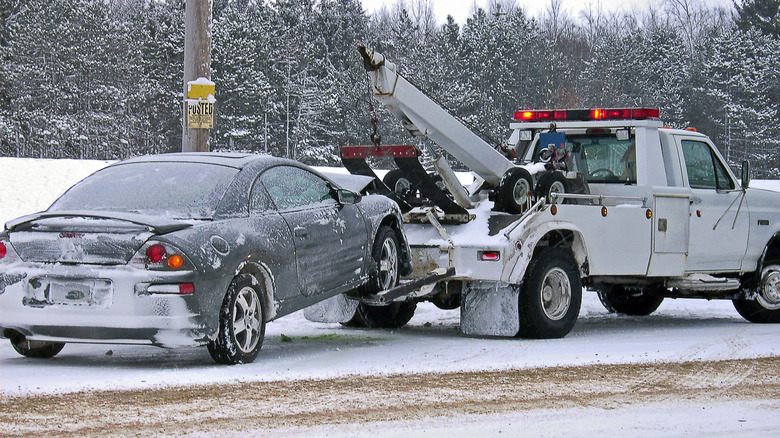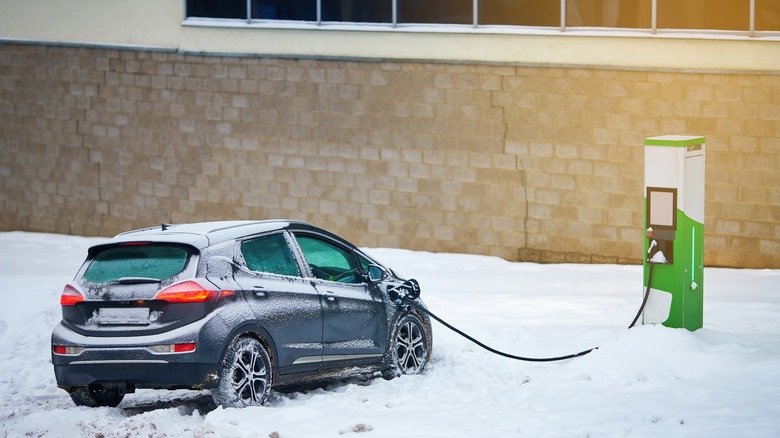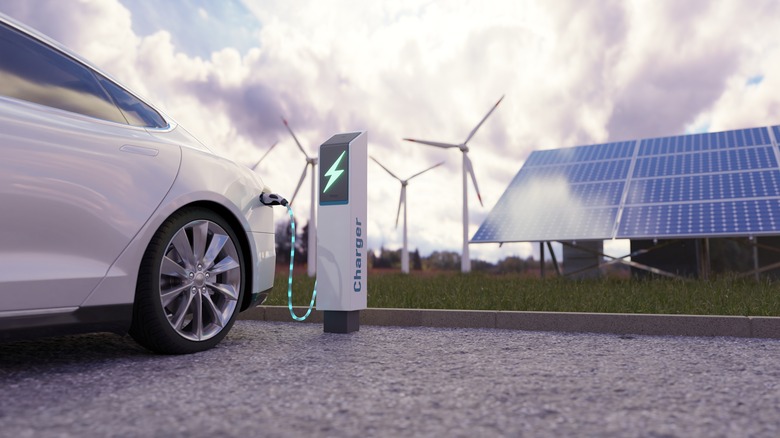Are Electric Vehicles Actually Better Than Gas In Intense Cold Weather Conditions?
The existence of electric vehicles has been a bit of a divisive topic for many, especially for lower-income individuals, for a variety of reasons. First, there's the hefty price tag attached to electric vehicles, which is out of reach for many. Second, the range an EV can travel on a single charge makes many potential owners anxious. The bigger concern, as it relates to range, is how well EVs perform in different temperatures. Cold weather is a significant concern for EV owners and those on the fence about purchasing one because freezing temperatures adversely affect even internal combustion engine vehicles.
EVs use considerably more energy in colder climates, resulting in a loss of range because of the need to keep the cabin and battery pack warm. However, gas-powered vehicles also lose range when it's cold because of denser air, increasing aerodynamic drag on the overall vehicle and decreasing tire pressure. On top of that, all of the vehicle's fluids take longer to warm up to their optimal operating temperatures. But what data is there to support whether one type of vehicle is better than the other?
Norway claims electric vehicles are superior in cold weather
Norway has been experiencing some exceptionally low temperatures since the start of 2024, giving consumers some small insight into the capabilities of EVs over those with internal combustion engines. The first nine days of the new year were a busy time for the Norwegian roadside assistance company Viking, similar to America's AAA, as they responded to 34,000 roadside calls throughout the country. Of all the vehicles they serviced, only 13% were EVs. Since then, EVs have made up about 21% of the service calls the company receives, mostly due to starting issues in the cold.
Norway has a world-leading share of EV ownership, giving Viking's survey some solid numbers for consumers to look at when considering an EV. However, the company's numbers didn't take into account the age of the gas-powered vehicles they serviced. Newer vehicles will perform better in colder temperatures due to better technology. While some people continue to drive their 1986 Ford F-150, no EV owner is hitting the road with GM's rare EV1 from 1996.
North American EV drivers had a rough time
AAA conducted a study in 2019 that found the average driving range of an EV can drop by 41% when the temperature reaches 20 degrees Fahrenheit. This little fact made it difficult for drivers in Illinois and Michigan during the week of January 15, 2024, as they struggled to charge their electric vehicles. Ann Arbor, Michigan, reached temperatures of 7 degrees Fahrenheit, while the Chicago area in Illinois saw it hit as low as minus 9 degrees Fahrenheit.
This made it exceptionally difficult for EV drivers to reach a charging station as well as receive a charge if they were lucky enough to plug in. Electric vehicles use lithium-ion batteries that don't release as much energy when it reaches freezing temperatures. This also makes it difficult to charge the battery because it needs to be at a certain temperature for electrons to move. Tesla says, "keeping the charge level above 20% when not plugged in will reduce the impact of cold temperatures."
All cars require special care
On average, more gas-powered vehicles fail in the cold than EVs, but that's largely because there are more of them on the road. No matter the type of vehicle, there are certain precautions every car owner should take to enhance their vehicle's performance in the cold. A gas-powered vehicle must idle for at least one minute to let the oil lubricate all the necessary moving components within the engine. However, idling for longer than a minute becomes a waste of fuel.
It might require more effort, but EV owners can take several steps to maximize their vehicle's performance, such as prewarming the car while it's still plugged into the charging station. This will allow the vehicle to put all its energy into getting the driver to their destination. The Tesla app even allows owners to preheat the cabin before they ever sit behind the wheel.
While Viking's numbers definitely favor EV ownership, it's clear that a lot more data is necessary before drivers can feel safe making the switch to full electric. What's clear right now is that gas-powered vehicles don't suffer from as many flaws in the extreme cold as EVs. However, EV technology has come a long way since its inception and is improving every year. With the right precautions, EV drivers can safely drive in colder climates.



